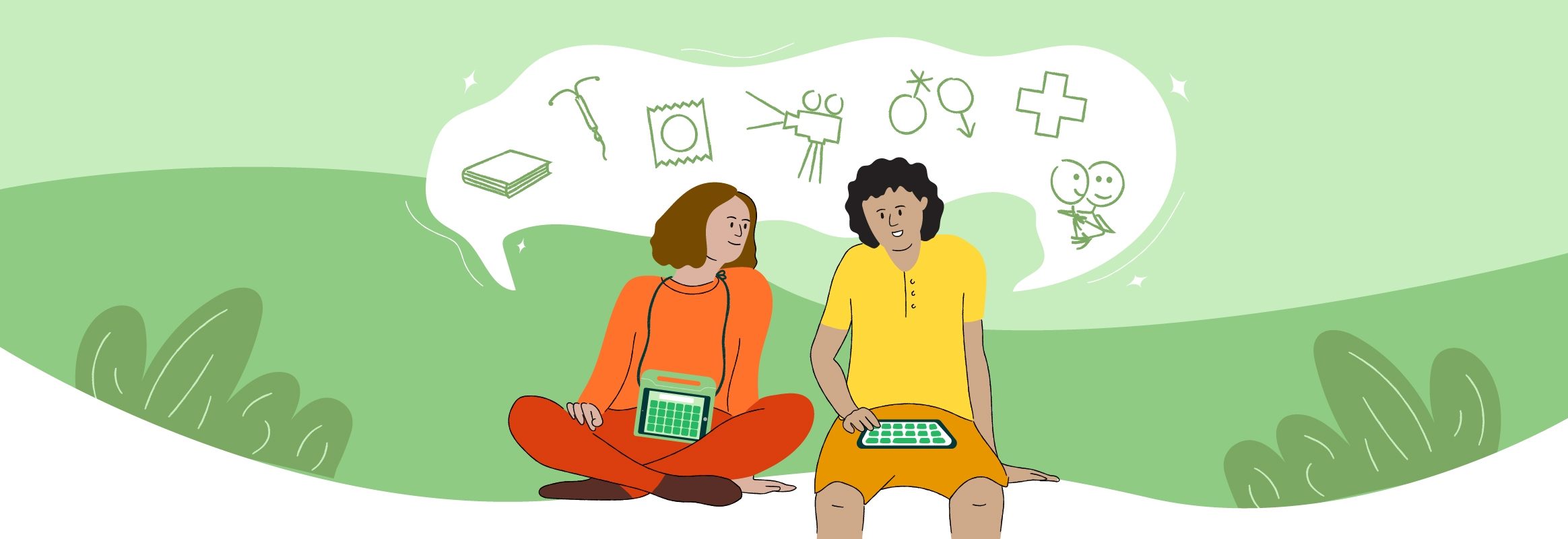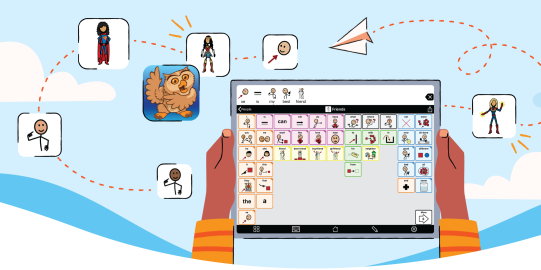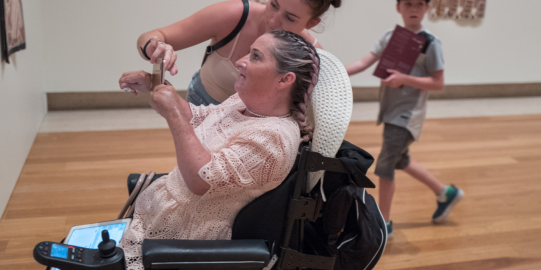Donnie TC Denome, MPH, is an autistic AAC user and a writer, designer, and sex educator. They use Proloquo2Go and Proloquo4Text on a daily basis. Portions of this post previously appeared on their own blog.
Everyone deserves access to a full, rich vocabulary that contains all the words they need in their lives. This is even more important for AAC users who use programs like Proloquo2Go and can’t (always) rely on speech or typing to get our messages across. And that’s why the inclusion of a wide range of vocabulary, even vocabulary that some people might consider “adult”, is so important.
Having access to vocabulary to talk about sex, sexuality, and body parts (including genitals) is so important for AAC users. We need this vocabulary for many reasons: safeguarding against abuse, identifying medical problems, talking about puberty and growing up, and talking about sex and sexuality. Even though this vocabulary might seem “inappropriate” or “too adult” for us, we all need it. Everyone grows up, everyone has a body, and everyone needs language to talk about our bodies and what we do with them. Our communication partners need to embrace this idea, model appropriate use of vocabulary when needed, and not restrict our vocabulary, even if it’s “inappropriate” sometimes.
I’m an adult, but vocabulary related to sex, sexuality, and body parts is not an adults-only topic. Even the youngest children deserve the correct, scientific words for their body parts, including their genitals. This is, at its heart, an abuse prevention measure: children who know the proper names for their body parts are more likely to be able to identify and report sexual abuse. Furthermore, people of all ages may have medical problems related to their genitals. A young child, for instance, may have a urinary tract infection that needs to be reported and treated before it spreads to their kidneys. Giving them the vocabulary to talk about pain in their genitals can help catch the UTI before it spreads.
Moreover, as AAC users become teenagers and age into adulthood, many of us desire sexual and/or romantic relationships. Contrary to a false but popular belief, AAC users are not eternally pure, sexless beings. Many of us want to develop intimate relationships, and we need vocabulary to reflect that. It is not even enough to have vocabulary about girlfriends and boyfriends, wives and husbands – we need vocabulary to talk about sex because many of us desire sex. And even if we do not want sex or intimacy at all, these things are still part of our world. Sex is considered a “normal” part of older adolescence and adulthood; even if we do not desire it, we are still surrounded by it.
When it comes to adults who use symbol-based communication, we deserve to be able to say and have symbols and buttons for anything we want. It’s one thing to tailor a child AAC user’s vocabulary to the kinds of language that their speaking peers use (though even then, it’s not okay to say a child can’t have access to slang or dirty words their peers use because it’s “not appropriate”). It’s quite another to say that an adult of legal age who would not be limited in their sexual and romantic expression if they did not use AAC can’t have access to sexual vocabulary. A communication partner or helper’s hesitance at a disabled adult existing as a sexual being or having intimate desires is not a reason to deny said adult proper vocabulary.
As I’ve written before on my own blog, I want to make it clear that I’m not lobbying for giving young AAC users a vocabulary full of highly sexual, adult words that their abled peers wouldn’t know. I am advocating that we give all young people (regardless of how they communicate) proper vocabulary to talk about their bodies, identities, and experiences. That means we teach young children proper anatomical terms for their genitalia. We make sure as they grow up they have the vocabulary to speak about things like puberty, sex, sexual experiences, sexuality/gender, and abuse and assault.
A common argument I hear against including this language is that it allows young users to abuse the vocabulary to say inappropriate things. This, to me, is an abdication of adult responsibility. A core part of AAC is modeling. Adults need to model, through AAC and through speech, that there is a time and a place to use this language and that it is not, for example, appropriate to scream “penis!” at the top of one’s volume during class. Children learn what the adults around them teach them. It is not appropriate, nor is it fair, to deprive children of essential vocabulary because the adults around them do not want to teach them how to use that vocabulary.
We know that children and young people will hear and learn inappropriate terminology. Our response with speaking children is to tell them, “there’s a time and a place for those words and it’s not now or here.” It should be the same for children who use AAC. The answer is to model appropriately, to discipline when necessary, and to accept that AAC-using children are like their speaking peers: they are children and sometimes children say inappropriate things. The answer is never to restrict or remove vocabulary or, indeed, to keep vocabulary off the device in the first place.
AAC users need to know that our bodies are not shameful things to talk about. We need to know that we can expect the same access to conversation as our speaking peers. We need to know that our words and experiences are just as important as those of others. But we cannot know this if our vocabularies are restricted. We cannot know this if we are (implicitly or explicitly) told that we do not deserve the same access to vocabulary around sex, sexuality, and body parts that our peers have. We cannot know this unless we have the vocabulary to express ourselves, completely and totally. And because we need to know these things, we need vocabulary to talk about sex, sexuality, and body parts, just like our peers do.
Using the symbols in Proloquo2Go
Sex, sexuality and body parts symbols have been introduced in Proloquo2Go 7.7 in a way that users never see an explicit symbol unless one was manually added to a button. For more information on how to use explicit symbols please read our support article (opens in a new tab).




